
 |
Eager Space | Videos by Alpha | Videos by Date | All Video Text | Support | Community | About |
|---|

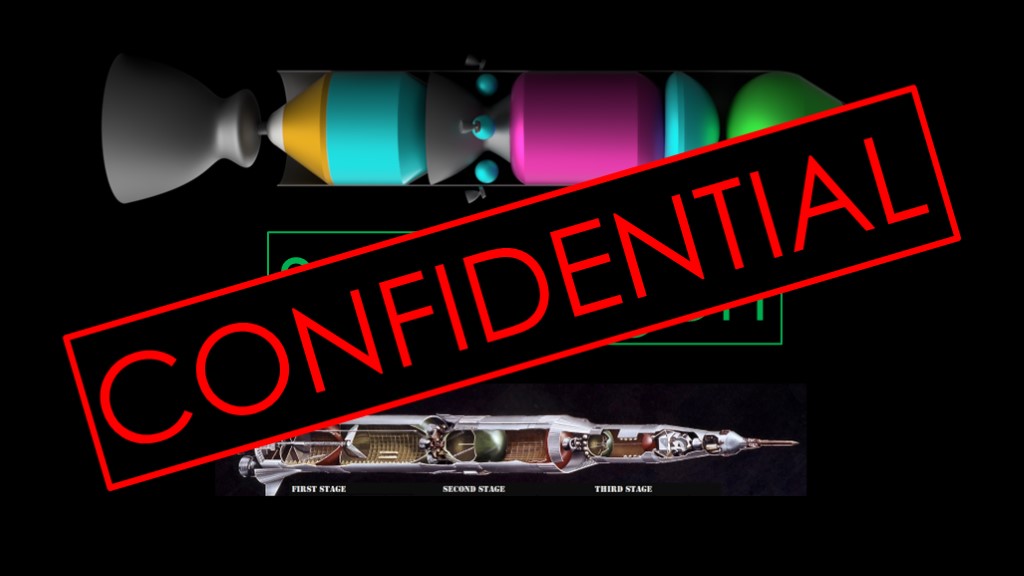
This is Sea Dragon...
Confidential...

If you haven't watched my first video on Sea Dragon, please go watch it now. This video will make very little sense if you don't watch that one first...
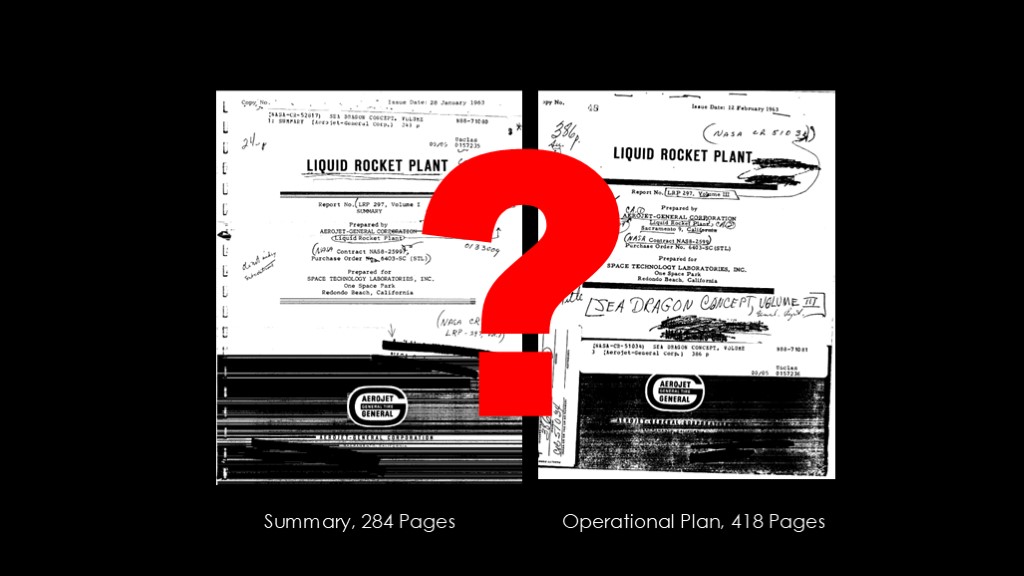
In the first video, I noted that my main references were the summary and operational plan documents, otherwise known as volume 1 and volume 3.
Which leads to an obvious question.
What happened to volume 2?
What additional insights does it contain? What did I get wrong in the my video?
I resigned myself to never knowing...
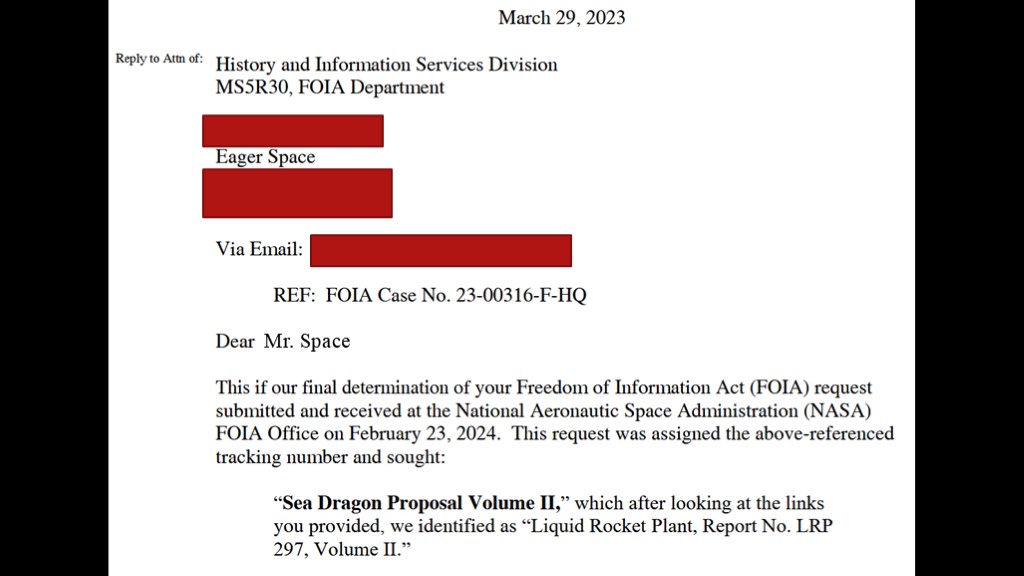
Then on March 23rd, this happened...
I got a response from NASA on my Freedom of Information Act request. It told me that they had located the document I had requested, and they were providing me the document with 496 pages released in full, 2 pages released in part, and 16 pages redacted.
More on those redactions later.
And yes, the document is publicly available, so if you want that you can just stop watching now, go to the description or the Wikipedia article and you'll find what you are looking for.
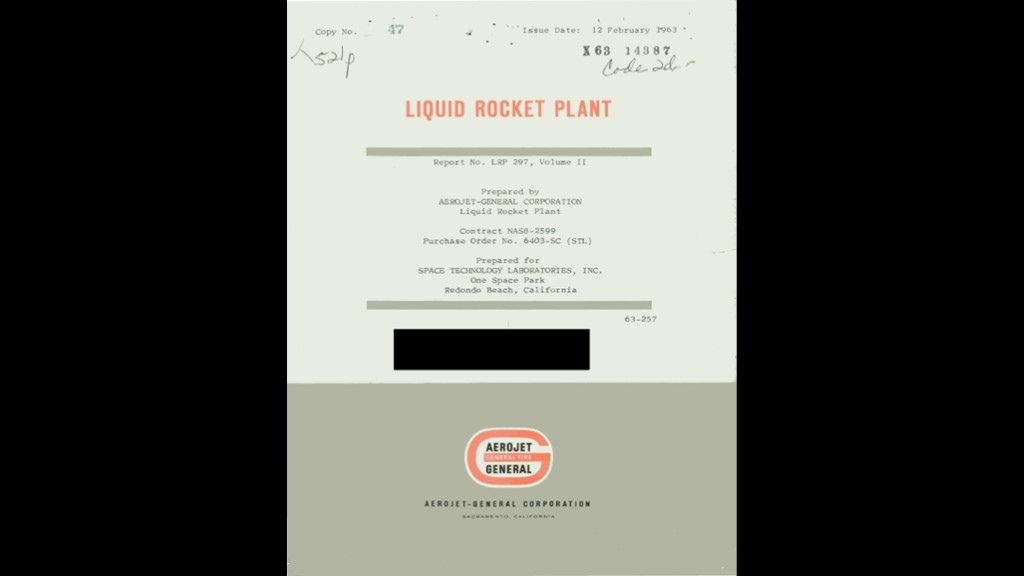
So let's get started looking at volume 2.
Note that this is going to be an overview of the things that I found interesting. It's not a full description as it's a long document.
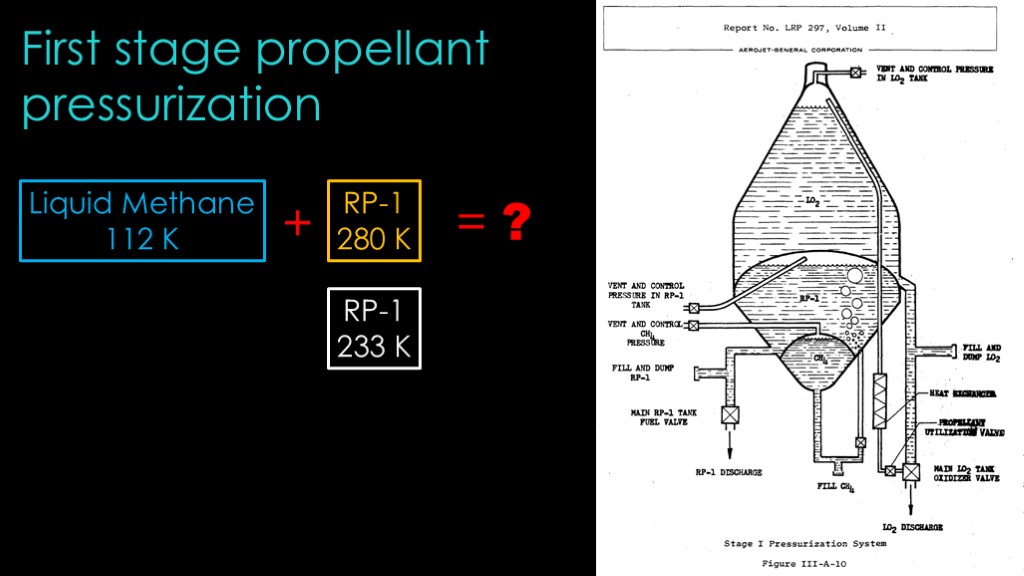
The first stage uses methane to pressurize the RP-1 tank, but it wasn't clear to me whether it was liquid methane or gaseous methane. Liquid methane is great because it's very compact.
The problem is that you are taking liquid methane at 112 kelvin and adding it to RP-1 at 280 Kelvin. That will cool the RP-1 and it freezes solid at 233 kelvin. That would seem to be problematic, at least at the location of the methane injection.
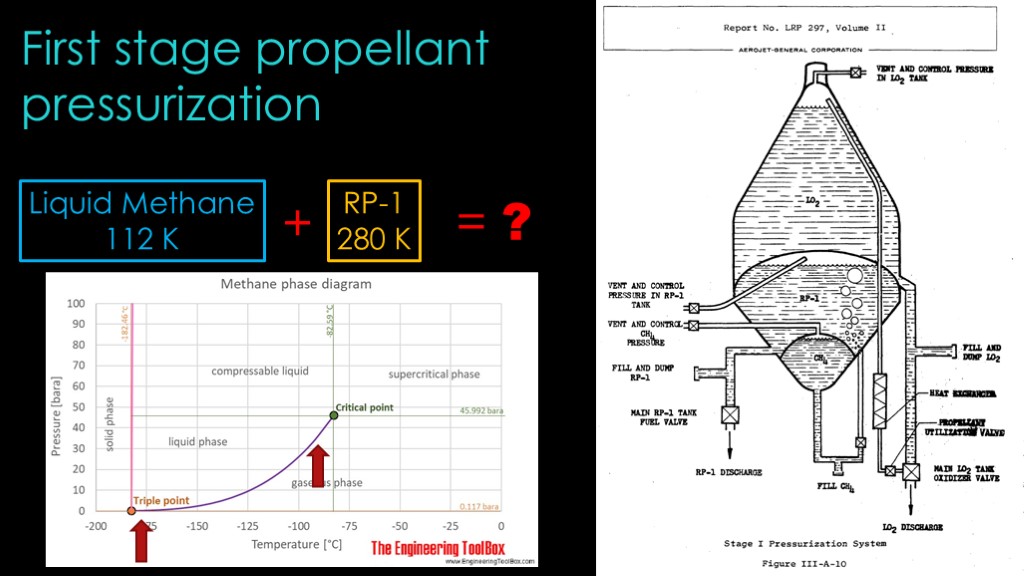
But this statement is, in fact, incorrect. Or at least overly simplistic
Liquid methane is 112 kelvin at one atmosphere of pressure. If you are willing to push the pressure up higher - say to 35 atmospheres - then you can keep it liquid at much higher temperatures. And that is what Sea Dragon would do.
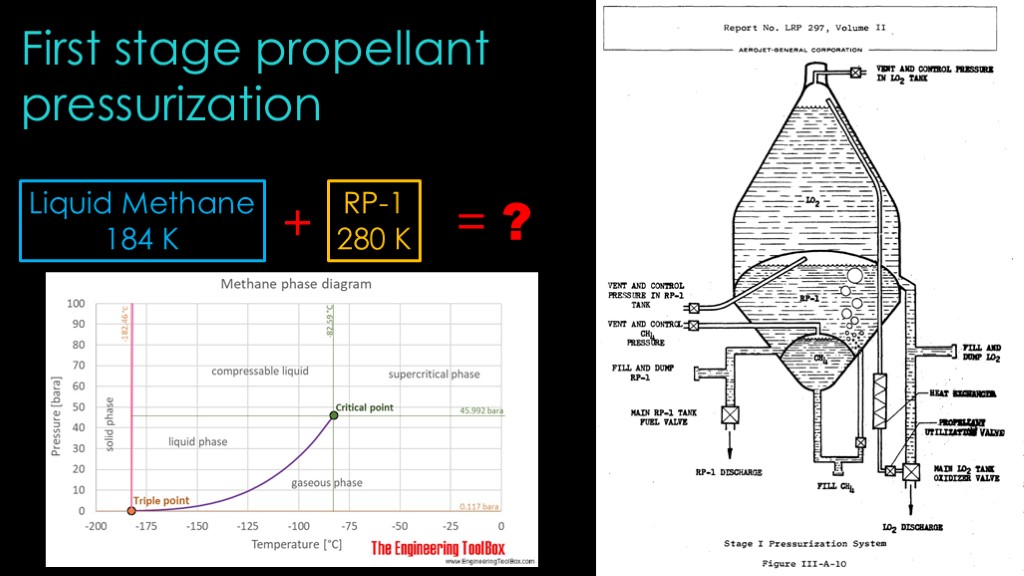
It stores the liquid methane at 500 psi, or about 35 atmospheres - remember that this is a pressure-fed rocket with very thick tanks - and at that pressure, the temperature is 184 kelvin. That reduces the amount of cooling in the RP-1 tank significantly, down to about 8 kelvin total.
Would that prevent localized freezing of the RP-1 at the methane injection sites? That is still an open question.
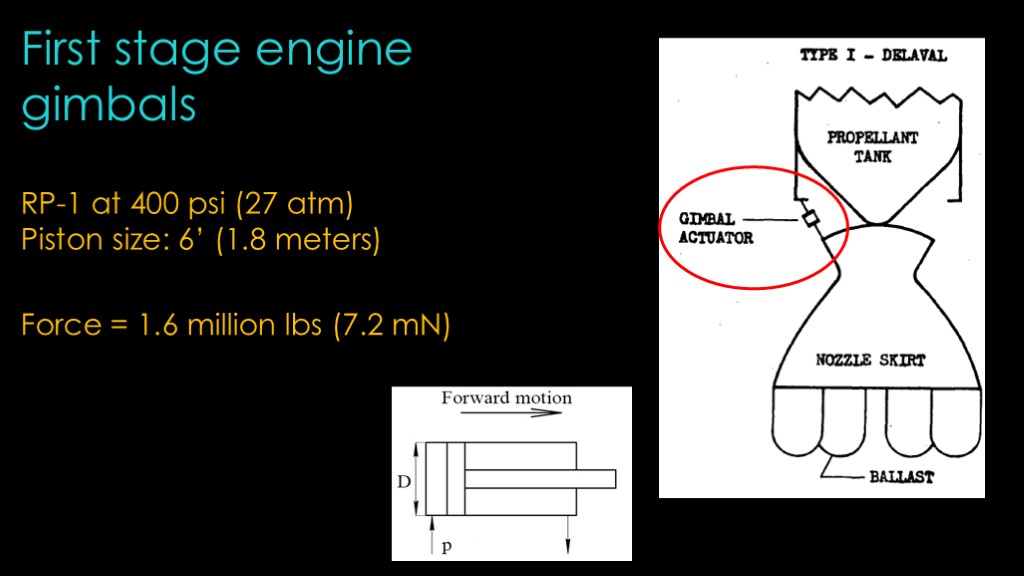
The first stage engine needs to be steered to keep the rocket on course - in case you were wondering, the second stage auxiliary rockets aren't strong enough to do that - and that is done with two hydraulic pistons known as gimbal actuators.
They use RP-1 from the tanks as hydraulic fluid, which gives them 400 psi or 27 atmospheres of pressure in the RP-1 tank. The specified piston is 6 feet in diameter, or 1.8 meters.
The force is simply the pressure multiplied by the area. Do the math, and that gives us a gimbal force of 1.6 million pounds, or 7.2 meganewtons. That is one big gimbal actuator.
In case you are wondering, the used RP-1 is just vented overboard.
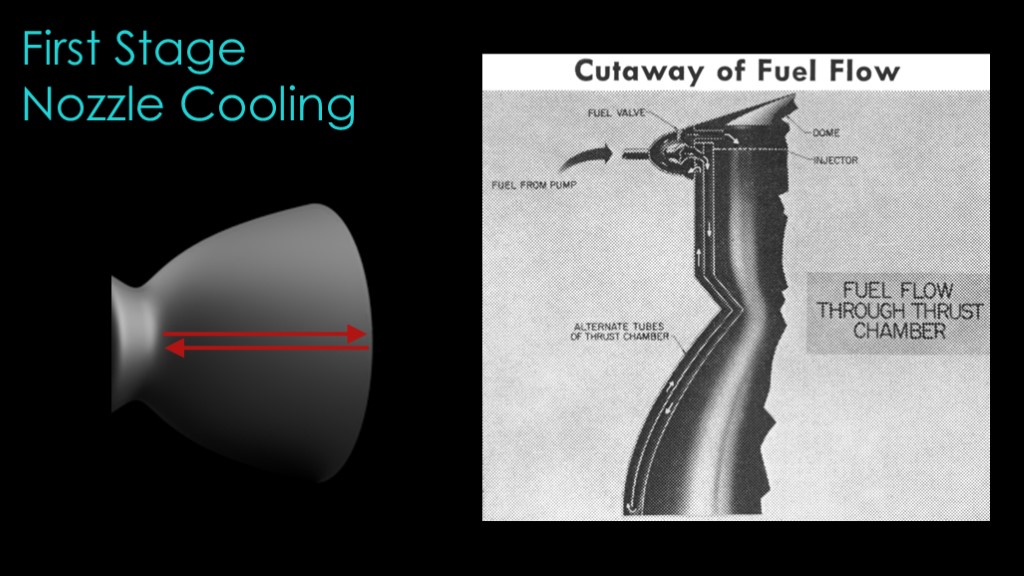
The first stage combustion chamber and nozzle is regeneratively cooled - the nozzle is made up of tubes, and RP-1 fuel flows out though the even-numbered tubes and then comes back through the odd-numbered tubes.
This is a very conventional approach.
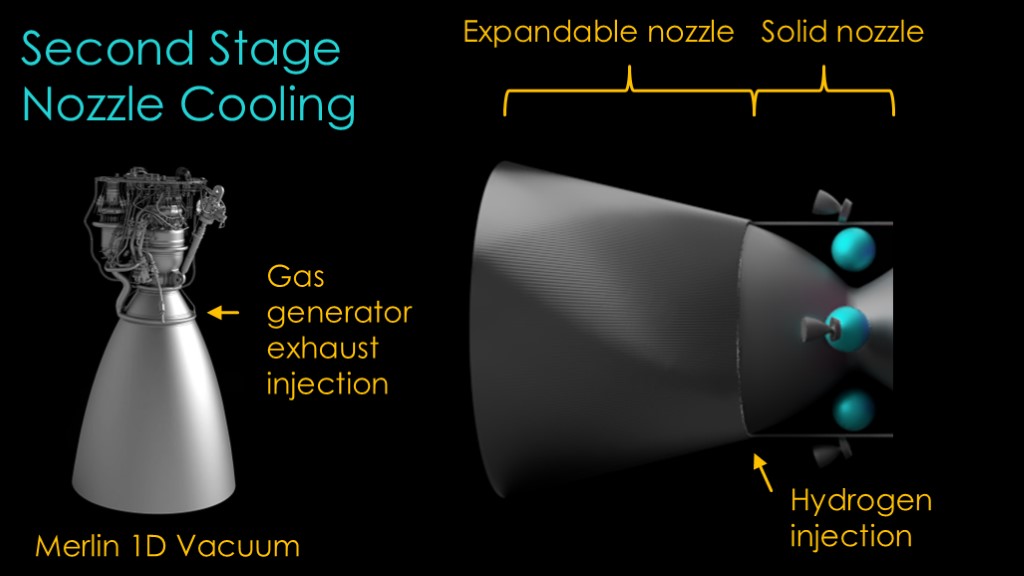
The second stage combustion chamber and solid nozzle is cooled by flowing hydrogen through cooling tubes in the nozzle walls. At the end of the solid nozzle, that hydrogen is then flows out of the end of the solid nozzle and helps cool the inside of the expandable nozzle. That nozzle is radiatively cooled.
The Merlin 1D vacuum engine used on the Falcon 9 uses a similar approach - the combustion chamber and top part of the nozzle is regeneratively cooled, and then the cooler exhaust from the gas generator is injected at the start of the radiatively cooled part of the nozzle.
This approach is typically known as "film cooling" as is results in a film of cooler gas next to the nozzle.
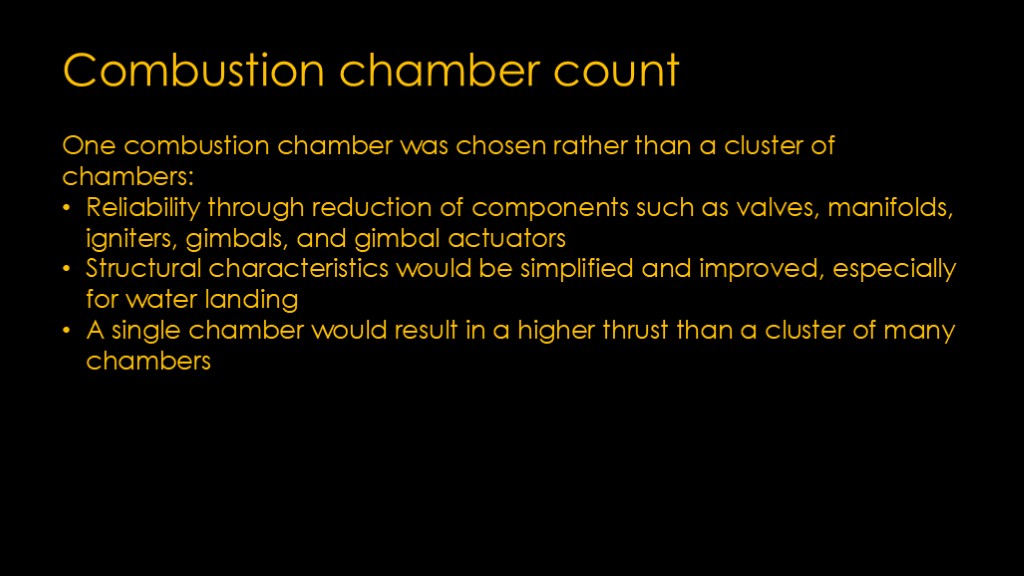
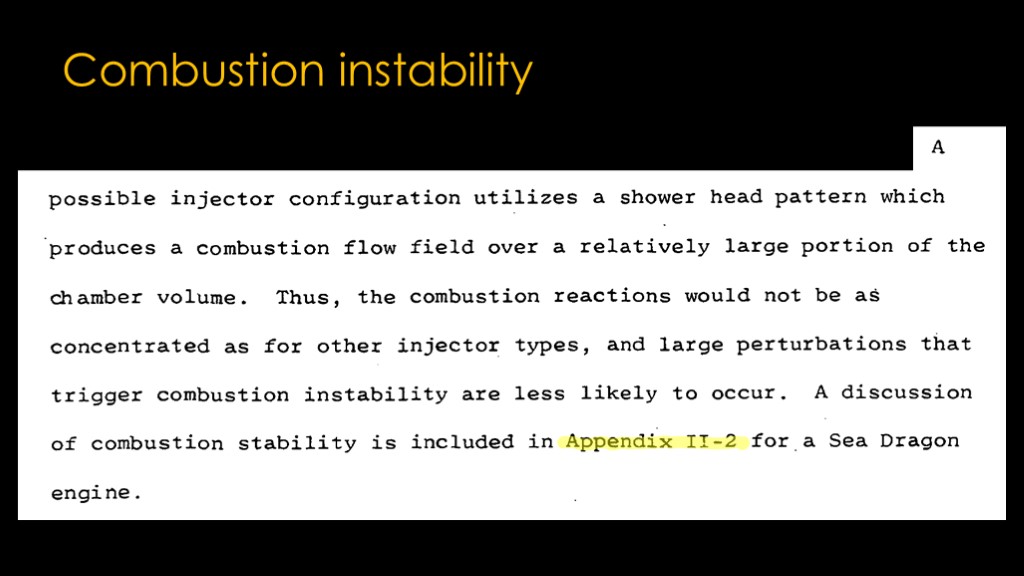
Here is what volume 2 says about combustion instability.
(read)
Unfortunately, Appendix II-2 is not included. I suspect this is because such information would run afoul of ITAR regulations. So this area will remain a mystery.

A series of illustrations from the documentation.
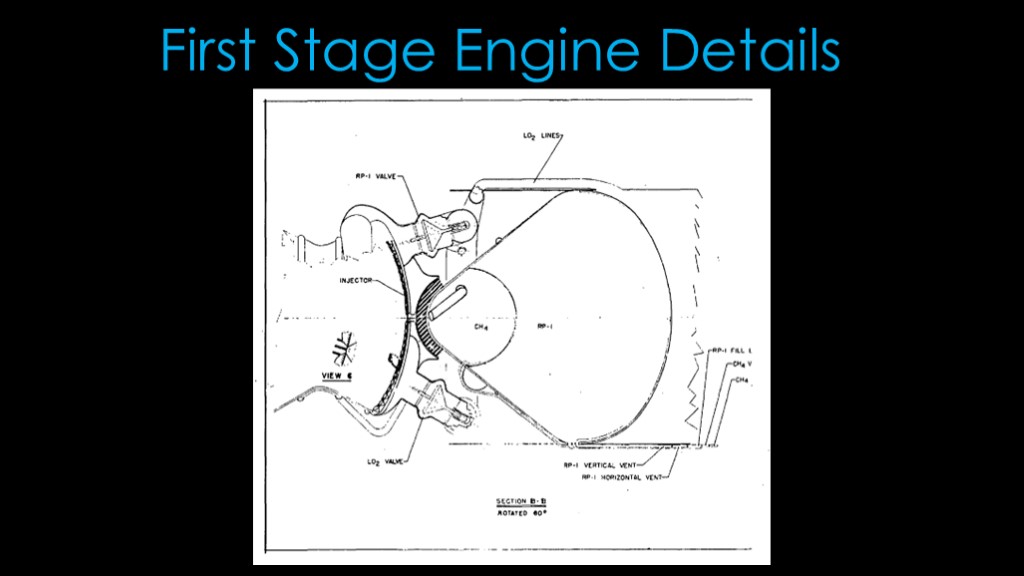
Here's a nice view of the first stage engine, including some detail about the injector.
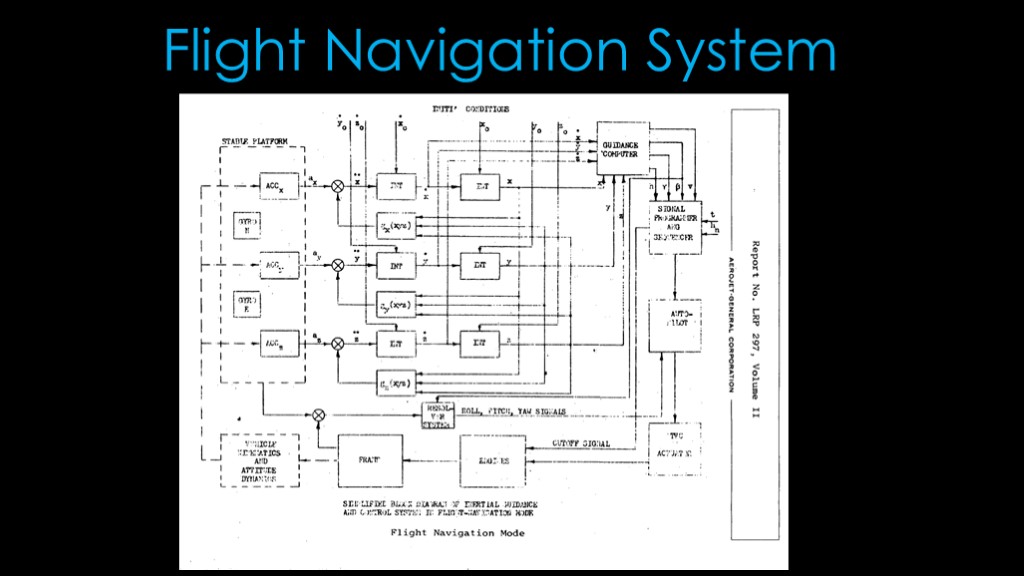
The math behind the flight navigation system.
Remember that this was the early 1960s, and such things were not common.
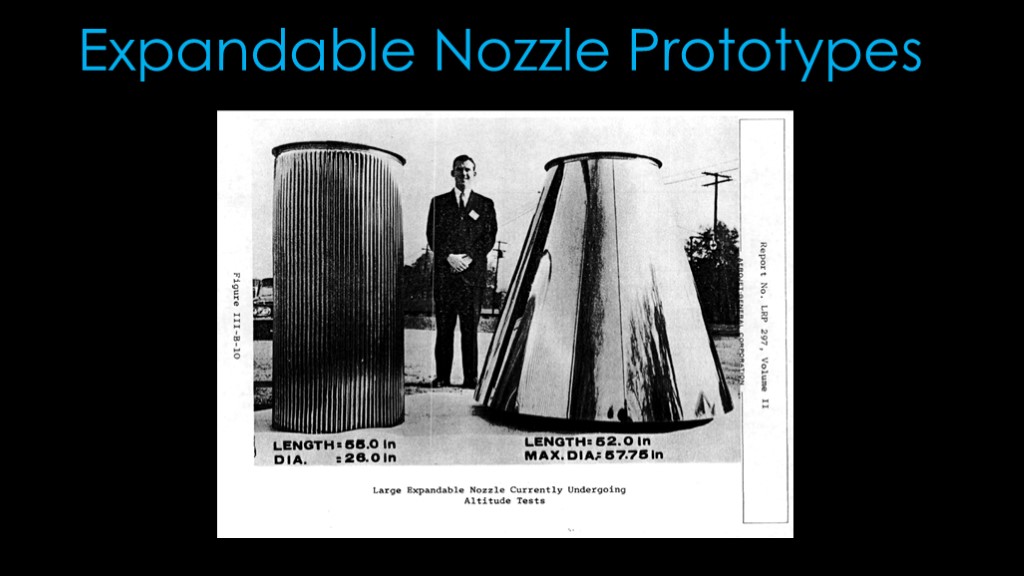
Prototypes of the expandable nozzles that would be used for the second stage.
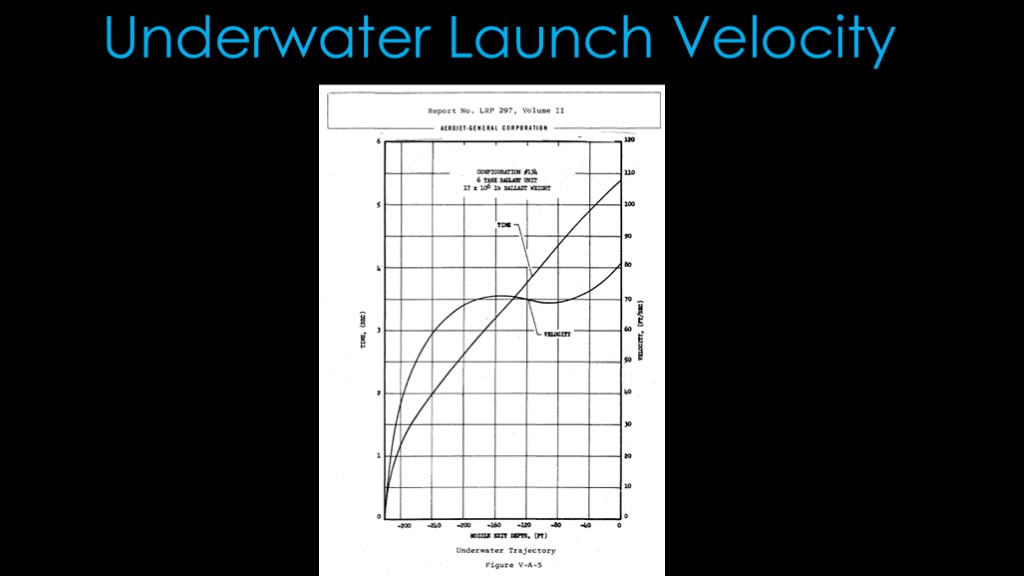
The underwater velocity during launch. At about 3 seconds into the launch, the tank pressure has dropped because the pressurization system hasn't quite caught up with the flow requirements.
The rocket has been accelerating quickly but it now pauses and slows down a bit for a couple of seconds before the velocity goes up again.
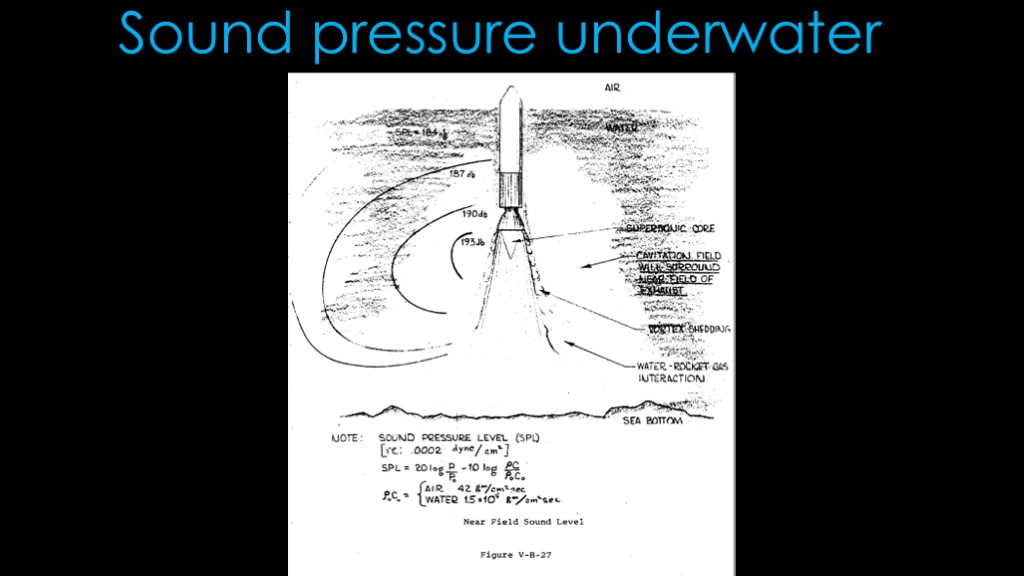
Underwater sound pressures during launch.
In today's world, we know that loud underwater noises can be disruptive to sea life, and Sea Dragon is probably the second loudest underwater source, after the underwater nuclear tests conducted by the United States and soviet union in the 40s, 50s, and 60s.
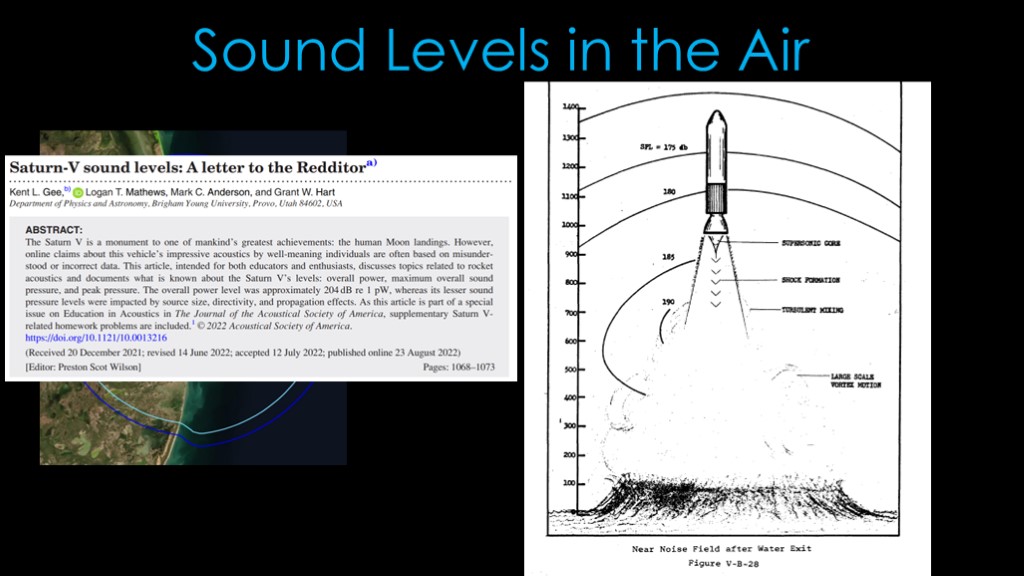
And the sound levels in flight.
Generally we see sound levels in plots like this one, which shows expected sound levels for Starship launches from Boca Chica. I did some digging, and found this fascinating paper from 2022 - Saturn V sound levels: a letter to the redditor.
We don't have distances in the sea dragon drawing, but this paper says the Saturn V was about 204 decibels right next to it, so these large numbers are not unrealistic.
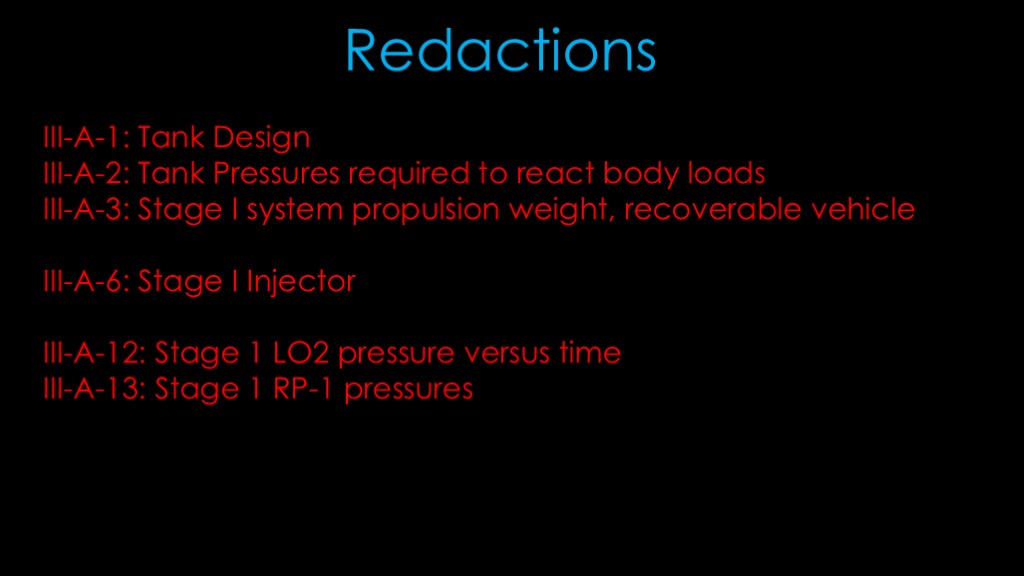
For the majority of the redacted pages, the page is redacted but the index that tells what is on the page is not redacted, and we can therefore figure out what information was redacted.
Here's what I was able to recover from section A.
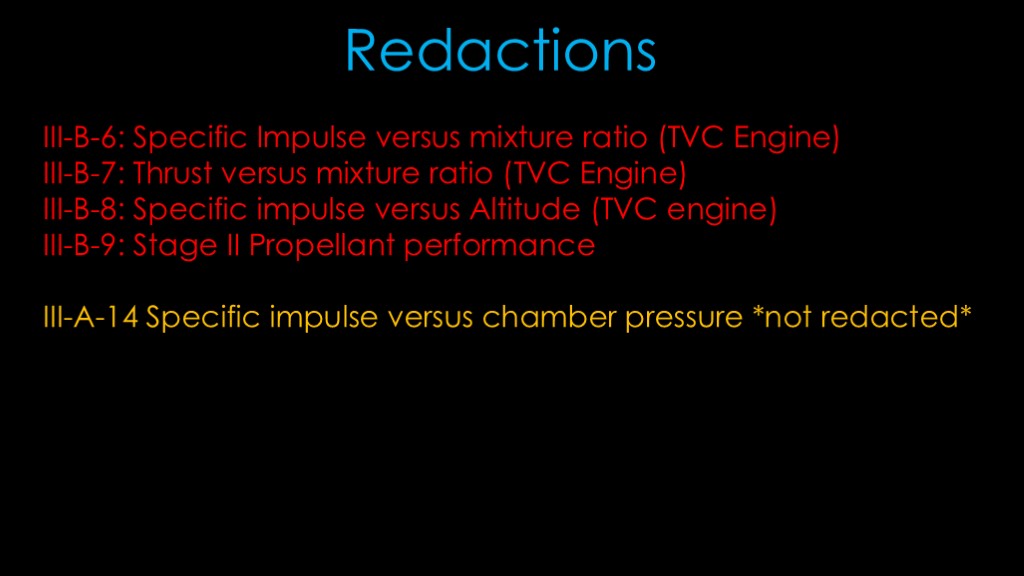
There are three strange redactions of the small thrust vector control engines.
Note that there is a similar graph for the first stage that is *not* redacted, so things are a bit uneven in my opinion.

And finally, some redactions on the trajectories of the two stages.
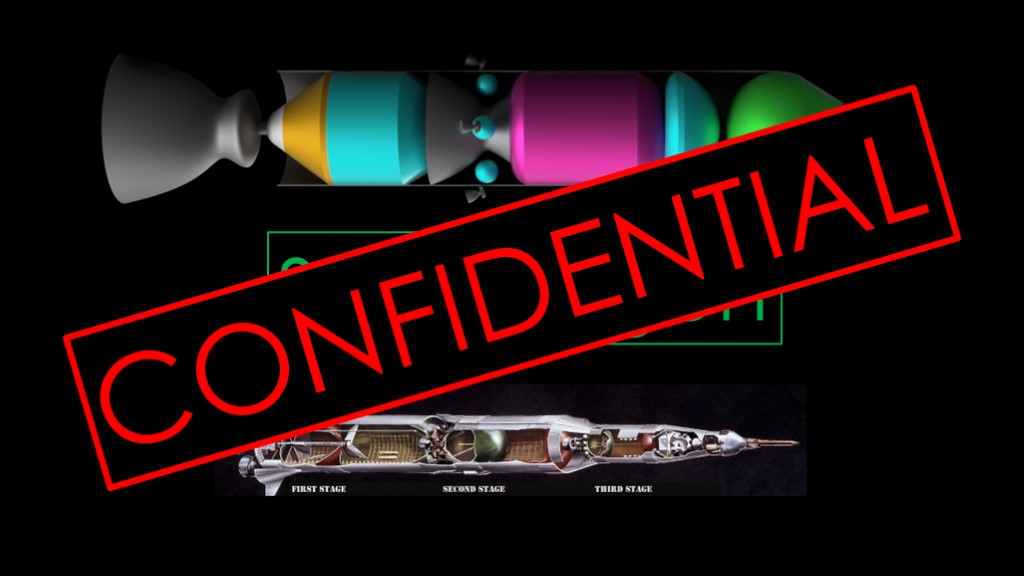
And that's all the information I found interesting enough to talk about, though you will find a lot more detail if you read the docs.

If you enjoyed this video, please write a poem "Ode to a FOIA request"